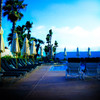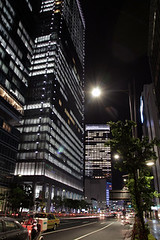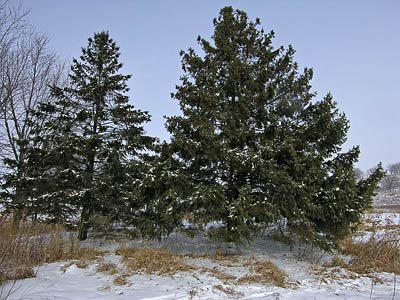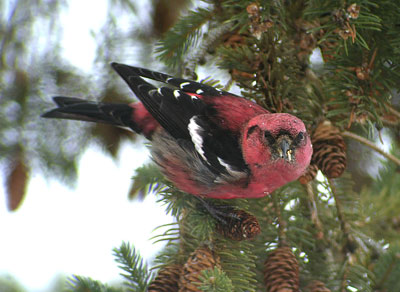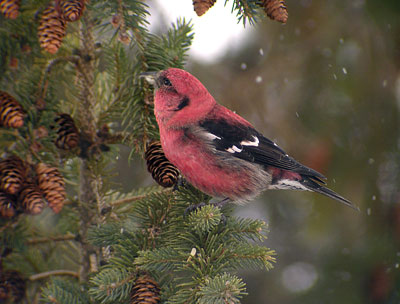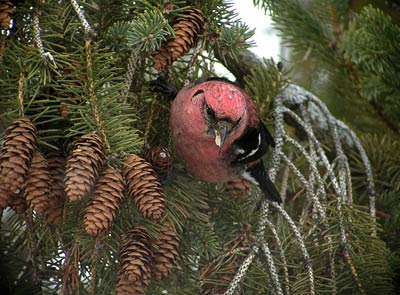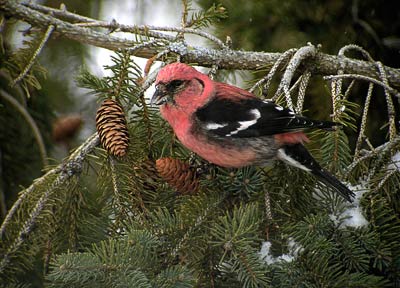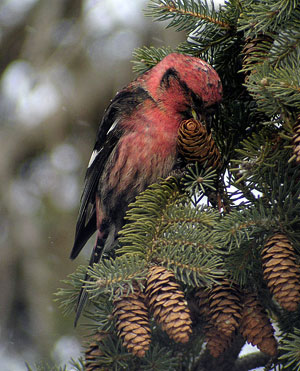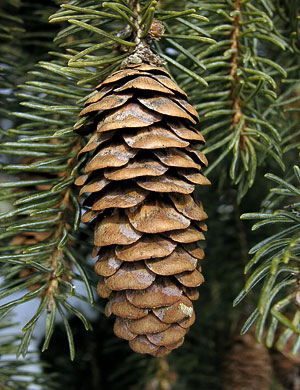Sunday, January 11, 2009
White-winged Crossbills!
With so many White-winged Crossbill reports coming from all corners of Wisconsin, I wasn't surprised to find a flock of 32 of them at Pheasant Branch this morning. Yesterday I even mentioned to Dottie about the possibility of crossbills showing up at a stand of spruce trees near the interpretative kiosk on the prairie. Sure enough, this morning as I was digiscoping American Tree Sparrows at the far north end of the prairie, I heard the characteristic rapid trilly cheet-cheet-cheet calls of White-winged Crossbills overhead. I quickly got on the flock with my binoculars and followed them as they flew south across the prairie. Naturally, they dropped right into the spruces!
Problem: 600 hundred yards of snowy trails between me and the crossbills. Well, the American Tree Sparrows weren't being very cooperative. Clouds were moving in and it was beginning to snow; the good digiscoping light was rapidly diminishing. I had been outside for over an hour and considered calling it a morning only moments before the crossbills arrived. I vacillated for a moment on what to do. Would the crossbills still be there by the time I hiked over to the spruces? Is it worth the effort given that the lighting might not be good enough for digiscoping? This was a new species for Pheasant Branch Conservancy, so in my mind the observation was solid for recording them in eBird. Well, I was there. I had all my gear with me. I decided to go for the crossbills.
Once I got to the spruces I knew immediately from all the chatter that the birds were still there. Hooray! At first they were spread out across several trees, but concentrated foraging at one particular spruce; perhaps the pine cones were just right. Birding-wise, this was only the second time I've ever seen this species and had never observed adult males before; so stunning against the dark green.
Watching them work, I became curious about their foraging strategy. I noticed rather than leave pine cones attached to branches they were plucking them off before ripping into the scales to get at seeds. I wondered if this behavior ensured viability of pine cones that remained attached, but then I found the following on Birds of North America:
"Crossbills usually forage on cones still attached to branches, although in the spring especially they may forage on fallen spruce cones (CWB; Nethersole-Thompson 1975). Fallen cones can have more seeds and allow faster feeding than those remaining in the trees (CWB) because much of the winter they have been covered by snow. Birds often remove closed cones from the tree by twisting them and occasionally by biting through the peduncle. Open cones are usually left attached to the branch (Austin 1968, CWB), but are turned as the birds forage, often getting severed from the branch."
Ah! So their foraging technique varies according to the condition of the cone. Here's a close-up of one of the cones from the spruce tree they seemed to be favoring:
Related Link: Visual Cues for Crossbills
Once I had captured enough video and still images, I spent some time simply admiring the beautiful birds through my binoculars. The last time I saw this species was 8 years ago at the UW Arboretum. I don't know when I'll ever have such a great opportunity to view and photograph White-winged Crossbills again. Watching, recording and learning; the observation was as complete as I could experience it.
All images © 2009 Mike McDowell

